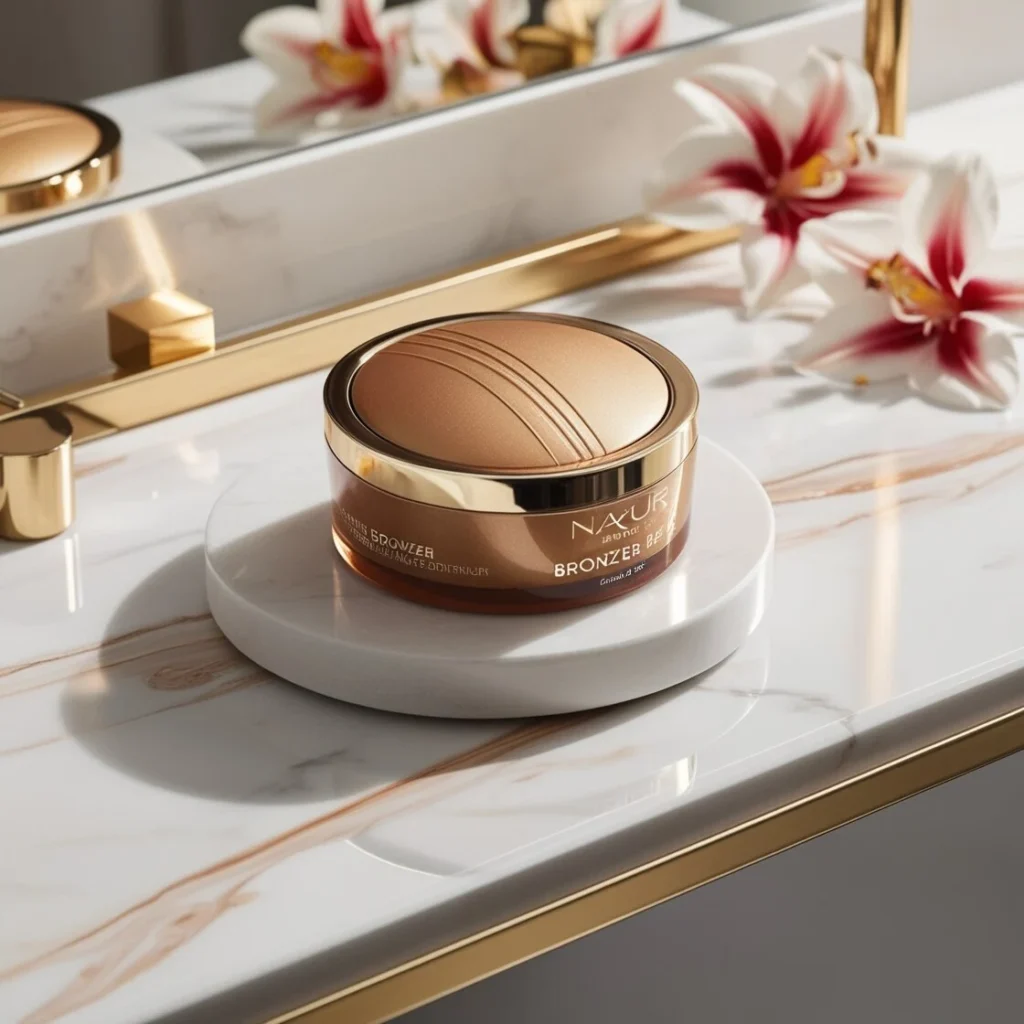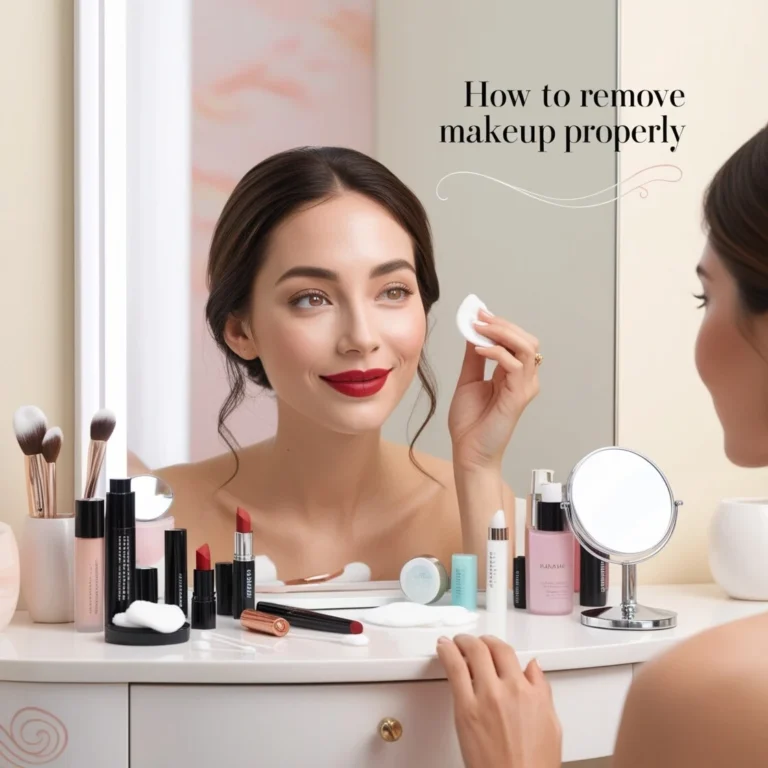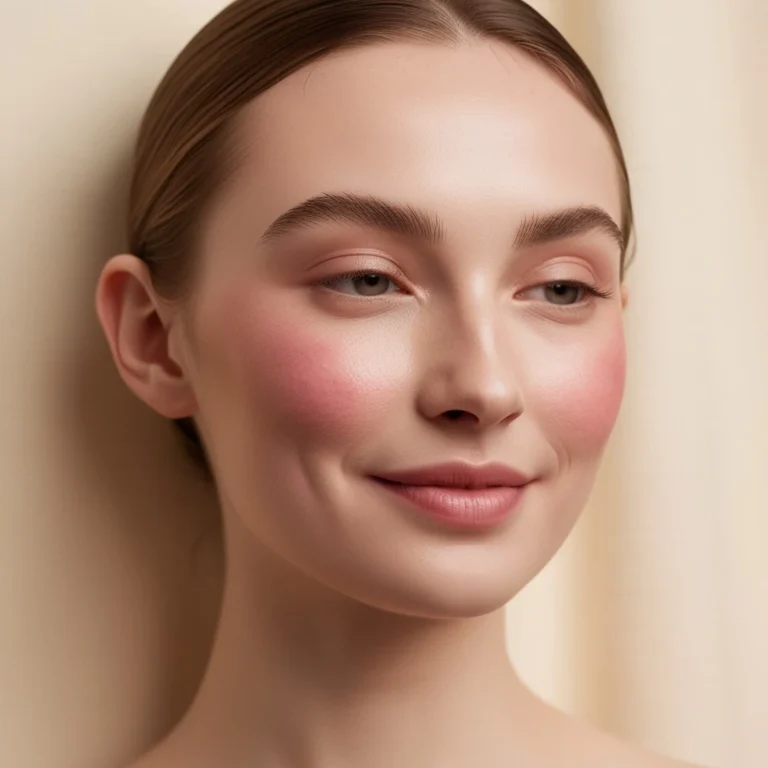In the world of makeup, bronzer has become a staple for achieving that sun-kissed glow, while contouring has gained popularity for creating defined facial structures. Understanding how to use it effectively and the differences between bronzing and contouring can elevate your makeup game and help you achieve a flawless look. This article will delve into what bronzer is, how to apply it, its differences from contouring, and tips for choosing the right one for your skin tone.

Index
What Is Bronzer?
Bronzer is a cosmetic product designed to add warmth and a sun-kissed appearance to the skin. It typically comes in powder, cream, or liquid forms and is used to create a radiant glow on the face and body. While it is often associated with summer and a tanned look, it can be used year-round to enhance your complexion and bring a touch of warmth to your features.
They are usually formulated with warm undertones, such as golden, peachy, or terracotta shades, making them ideal for mimicking the natural effects of sun exposure. When applied correctly, bronzer can give your skin a healthy, luminous appearance.
How to Choose the Right One
Choosing the right one can significantly impact how it looks on your skin. Here are some key factors to consider when selecting a bronzer:
- Skin Tone: Consider your skin tone when choosing a bronzer. If you have fair skin, opt for lighter ones with peachy or soft golden undertones. Medium skin tones can experiment with ones that have a warm tan or golden finish, while deeper skin tones should look for richer, deeper shades with warm or red undertones to avoid ashy results.
- Formulation: Some come in various formulations, including powders, creams, and liquids. Powder ones are versatile and easy to blend, making them suitable for all skin types. Cream and liquid can provide a more natural finish and are often ideal for dry skin, while those with oily skin may prefer powder formulas.
- Finish: The finish of it can also affect your overall look. Matte ones are perfect for a subtle, everyday glow, while shimmer or satin ones can add luminosity and a radiant finish. If you’re aiming for a more natural look, consider one with a soft sheen rather than a heavy shimmer.
- Undertones: Understanding the undertones in your bronzer is essential for achieving a seamless blend. Warm ones typically contain orange, gold, or red undertones, while cool ones may have pink or taupe undertones. Choose one that complements your skin’s undertones for a more harmonious look.
How to Apply It
Applying it can be straightforward, but mastering the technique will enhance your makeup application and help you achieve a natural, sun-kissed glow. Follow these steps to apply the product like a pro:
- Prep Your Skin: Before applying it, ensure your skin is clean and moisturized. Use a primer if desired, as it helps create a smooth canvas for makeup application.
- Choose the Right Brush: Selecting the appropriate brush for the product application is crucial. A fluffy, angled brush is ideal for it’s application, as it allows for even distribution and blending. Avoid brushes that are too dense, as they can deposit too much product in one area.
- Find the Right Areas to Apply: The key to bronzing is to apply the product where the sun naturally hits your face. Focus on the following areas:
- Cheekbones: Apply it on the apples of your cheeks and sweep it back toward your temples, following the natural contour of your cheekbones.
- Forehead: Lightly dust ones along your hairline on your forehead, creating a “3” shape by connecting your forehead bronzer to your cheekbones.
- Jawline: Apply it along your jawline to add definition and warmth. Blend well to avoid harsh lines.
- Nose: For a subtle sun-kissed look, you can also apply a small amount of the product down the bridge of your nose.
- Blend, Blend, Blend: The most critical aspect of it’s application is blending. Use circular motions to blend the product into your skin seamlessly. Ensure there are no harsh lines, as this can make the bronzer appear unnatural.
- Build Up the Product: Start with a small amount of it and gradually build it up to achieve your desired intensity. This technique prevents over-application and allows for a more natural finish.
- Set Your Makeup: Once you’ve applied it, consider setting your makeup with a translucent powder or setting spray to ensure it stays in place throughout the day.
The Difference Between Bronzer and Contouring
While bronzer and contouring are both techniques used to enhance facial features, they serve different purposes and utilize different products. Understanding these differences will help you use each product effectively.
Purpose:
- Bronzer: The primary purpose is to add warmth and a sun-kissed glow to the skin. It creates a healthy, radiant appearance and mimics the effect of sun exposure.
- Contouring: Contouring is designed to sculpt and define the face by creating shadows. It is used to enhance the structure of the face, emphasizing cheekbones, narrowing the nose, and defining the jawline.
Color and Undertones:
- Bronzer: Typically comes in warm, golden, or peachy tones that mimic the natural warmth of the sun. It should not have strong gray or ashy undertones.
- Contour: Contour products often have cooler undertones, such as taupe or gray, to create a shadow effect on the skin.
Application Areas:
- Bronzer: Applied on the high points of the face where the sun naturally hits, such as the forehead, cheekbones, and nose.
- Contour: Applied on the hollows of the cheeks, the sides of the nose, and along the jawline to create the illusion of depth.
Finish:
- Bronzer: Usually has a radiant or satin finish, enhancing the skin’s natural glow.
- Contour: Generally has a matte finish to mimic natural shadows.
Common Mistakes When Using Bronzer
Using bronzer can enhance your makeup look, but certain mistakes can lead to an unnatural appearance. Here are some common application mistakes to avoid:
- Applying Too Much Product: It can be tempting to go heavy-handed with bronzer, but this can lead to an unnatural look. Start with a light application and build up gradually.
- Wrong Shade Selection: Choosing a bronzer that is too dark or has the wrong undertone can make your makeup look muddy. Ensure you select a shade that complements your skin tone.
- Neglecting to Blend: Failing to blend bronzer properly can result in harsh lines. Take the time to blend thoroughly for a seamless finish.
- Ignoring the Neck: When applying bronzer, don’t forget to blend it down to your neck to ensure a cohesive look. This helps avoid a noticeable contrast between your face and neck.
- Using the Wrong Tools: The brush you use can significantly impact the final look. Make sure to use a fluffy brush designed for bronzer to achieve an even application.
Incorporating Bronzer into Your Makeup Routine
Incorporating it into your makeup routine can be simple and enjoyable. Here’s how to integrate it seamlessly:
- Layering with Other Products: After applying your foundation, use bronzer as the second step in your makeup routine. Follow up with blush to add a pop of color to your cheeks.
- Combining with Highlighter: For a glowing look, apply it first and then follow up with a highlighter on the high points of your face, such as your cheekbones, brow bones, and the tip of your nose.
- Experimenting with Different Finishes: Don’t be afraid to explore different bronzer formulations, such as cream, powder, or liquid. Each can provide a unique finish and feel on the skin.
- Using Bronzer on the Body: Bronzer can also be applied to areas of the body to enhance your tan. Consider applying bronzer on your collarbones, shoulders, or even your legs for a cohesive, sun-kissed look.
- Adjusting for Seasons: Your bronzer application may vary with the seasons. In the summer, you might apply more bronzer to enhance your natural tan, while in the winter, a lighter application can create a healthy glow without overwhelming your complexion.
Conclusion
Bronzer is a versatile and essential product for anyone looking to achieve a sun-kissed, radiant complexion. Understanding how to choose and apply it effectively, as well as the differences between bronzing and contouring, can help elevate your makeup routine and enhance your natural beauty. By following the tips outlined in this article, you can confidently incorporate this product into your makeup arsenal, creating a beautiful, glowing look that suits any occasion. Embrace the warmth and dimension that it can bring to your face, and enjoy experimenting with different techniques to find what works best for you.



